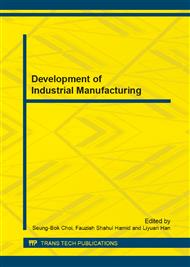p.222
p.227
p.232
p.236
p.240
p.247
p.251
p.256
p.260
A Simplified Design Method of Horizontal Axis Tidal Energy Turbine Blade
Abstract:
Horizontal axis tidal turbines (HATTs) are efficient in converting tidal energy. Improvements in the design of the HATTs require a thorough understanding of the energy conversion process. In this paper, the design of a HATT with two blades is conducted by blade element momentum theory (BEM). In this simplified method, the eddy current induced by the rotors hub and tips were considered while ignoring the blade elements drag items. Based on the assumption of maximum power of blade elements, the distribution of blade elements flow angle and the chord length coefficient along the radius can be assumed to be associated only with the blade elements tip speed ratio (TSR) which is dimensionless. This approach was validated by comparing the simulation results with computational fluid dynamics (CFD). A good qualitative match between the expected value and simulation results was observed, indicating that the design method is feasible and reasonable.
Info:
Periodical:
Pages:
240-246
Citation:
Online since:
February 2014
Authors:
Keywords:
Price:
Сopyright:
© 2014 Trans Tech Publications Ltd. All Rights Reserved
Share:
Citation:


